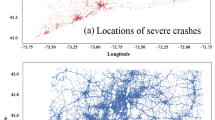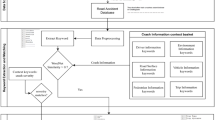Abstract
The development of the metal structure of a car is carried out throughout the vehicle project using numerical simulation. The simulation of the crash, which is representative of the most serious accidents, is the most expensive computation of the design process. Each simulation takes about 10 h on a high performance computer. The engineers must regularly carry out optimization studies using their crash model. The optimization method used is based on a Design Of Experiments and requires from 3 to 10 crash computations per parameter that are varied in the study. Studies with dozens of parameters, often cost hundreds of computations, that gives a study delay of several weeks. The statistical models model some scalar variables, which are objectives and constraints of the optimization study. This paper focuses on the use of a reduced crash model to perform an optimization study representative of the standard studies, replacing the statistical models created from the DOE method. The proposed method is based on Regression-CUR which combines features selection and a multiple linear regression model, here replaced by a Random Forest model. The aim is to model all the fields simulated by the crash calculation. The replacement of the linear regression by Random Forest has several advantages such as non-linearity, low memory footprint and efficient computing.










Similar content being viewed by others
References
Berkooz, G., Holmes, P., Lumley, J.L.: The proper orthogonal decomposition in the analysis of turbulent flows. Annu. Rev. Fluid Mech. 25(1), 539–575 (1993)
Bohn, B., Garcke, J., Iza-Teran, R., Paprotny, A., Peherstorfer, B., Schepsmeier, U., Thole, C.-A.: Analysis of car crash simulation data with nonlinear machine learning methods. Procedia Comput. Sci. 18, 621–630 (2013)
Breiman, L.: Random forests. Mach. Learn. 45(1), 5–32 (2001)
Chatterjee, A.: An introduction to the proper orthogonal decomposition. Curr. Sci 78(7), 808–817 (2000)
Chen, T., Guestrin, C.: Xgboost: A scalable tree boosting system. In: Proceedings of the 22nd ACM sigkdd international conference on knowledge discovery and data mining, pp. 785–794. ACM, New York (2016)
Chinesta, F., Ammar, A., Cueto, E.: Recent advances and new challenges in the use of the proper generalized decomposition for solving multidimensional models. Arch. Comput. Methods Eng. 17(4), 327–350 (2010)
Connor, J.T., Douglas Martin, R., Atlas, L.E.: Recurrent neural networks and robust time series prediction. IEEE Trans. Neural Netw. 5(2), 240–254 (1994)
Cunningham, P., Delany, S.J.: k-nearest neighbour classifiers. Mult. Classif. Syst. 34(8), 1–17 (2007)
Friedman, J., Hastie, T., Tibshirani, R.: The elements of statistical learning, vol. 1. Springer series in statistics, New York (2001)
Goodfellow, I., Pouget-Abadie, J., Mirza, M., Xu, B., Warde-Farley, D., Ozair, S., Courville, A., Bengio, Y.: Generative adversarial nets. In: Advances in neural information processing systems, pp. 2672–2680 (2014)
Goreinov, S.A., Oseledets, I.V., Savostyanov, D.V., Tyrtyshnikov, E.E., Zamarashkin, N.L.: How to find a good submatrix. In: Matrix Methods: Theory, Algorithms And Applications: Dedicated to the Memory of Gene Golub, pp. 247–256. World Scientific (2010)
Hastie, T., Tibshirani, R.: Discriminant adaptive nearest neighbor classification and regression. In: Advances in Neural Information Processing Systems, pp. 409–415 (1996)
Huang, H., Ding, C., Luo, D., Li, T.: Simultaneous tensor subspace selection and clustering: the equivalence of high order svd and k-means clustering. In: Proceedings of the 14th ACM SIGKDD international conference on Knowledge Discovery and Data mining, pp. 327–335. ACM, New York (2008)
Jézéquel, L., Dessombz, O., Charrier, M., Tourbier, Y.: Strategic decision support through combinatorial optimization with costly evaluation function (2019)
Kerschen, G., Golinval, J., Vakakis, A.F., Bergman, L.A.: The method of proper orthogonal decomposition for dynamical characterization and order reduction of mechanical systems: an overview. Nonlinear Dyn. 41(1–3), 147–169 (2005)
Le Guennec, Y., Brunet, J.P., Daim, F.Z., Chau, M., Tourbier, Y.: A parametric and non-intrusive reduced order model of car crash simulation. Comput. Methods Appl. Mech. Eng. 338, 186–207 (2018)
Mahoney, M.W., Drineas, P.: Cur matrix decompositions for improved data analysis. Proc. Nat. Acad. Sci. 106(3), 697–702 (2009)
Probst, P., Boulesteix, A.-L.: To tune or not to tune the number of trees in random forest. J. Mach. Learn. Res. 18, 181–1 (2017)
Probst, P., Wright, M.N., Boulesteix, A.-L.: Hyperparameters and tuning strategies for random forest. Wiley Interdisciplinary Reviews: Data Mining and Knowledge Discovery, p. e1301 (2019)
Smola, A.J., Schölkopf, B.: A tutorial on support vector regression. Stat. Comput. 14(3), 199–222 (2004)
Author information
Authors and Affiliations
Corresponding author
Additional information
Publisher's Note
Springer Nature remains neutral with regard to jurisdictional claims in published maps and institutional affiliations.
Rights and permissions
About this article
Cite this article
Assou, S., Tourbier, Y., Gstalter, E. et al. A reduced model using random forest: application on car crash optimization. SeMA 78, 193–212 (2021). https://doi.org/10.1007/s40324-019-00208-8
Received:
Accepted:
Published:
Issue Date:
DOI: https://doi.org/10.1007/s40324-019-00208-8




